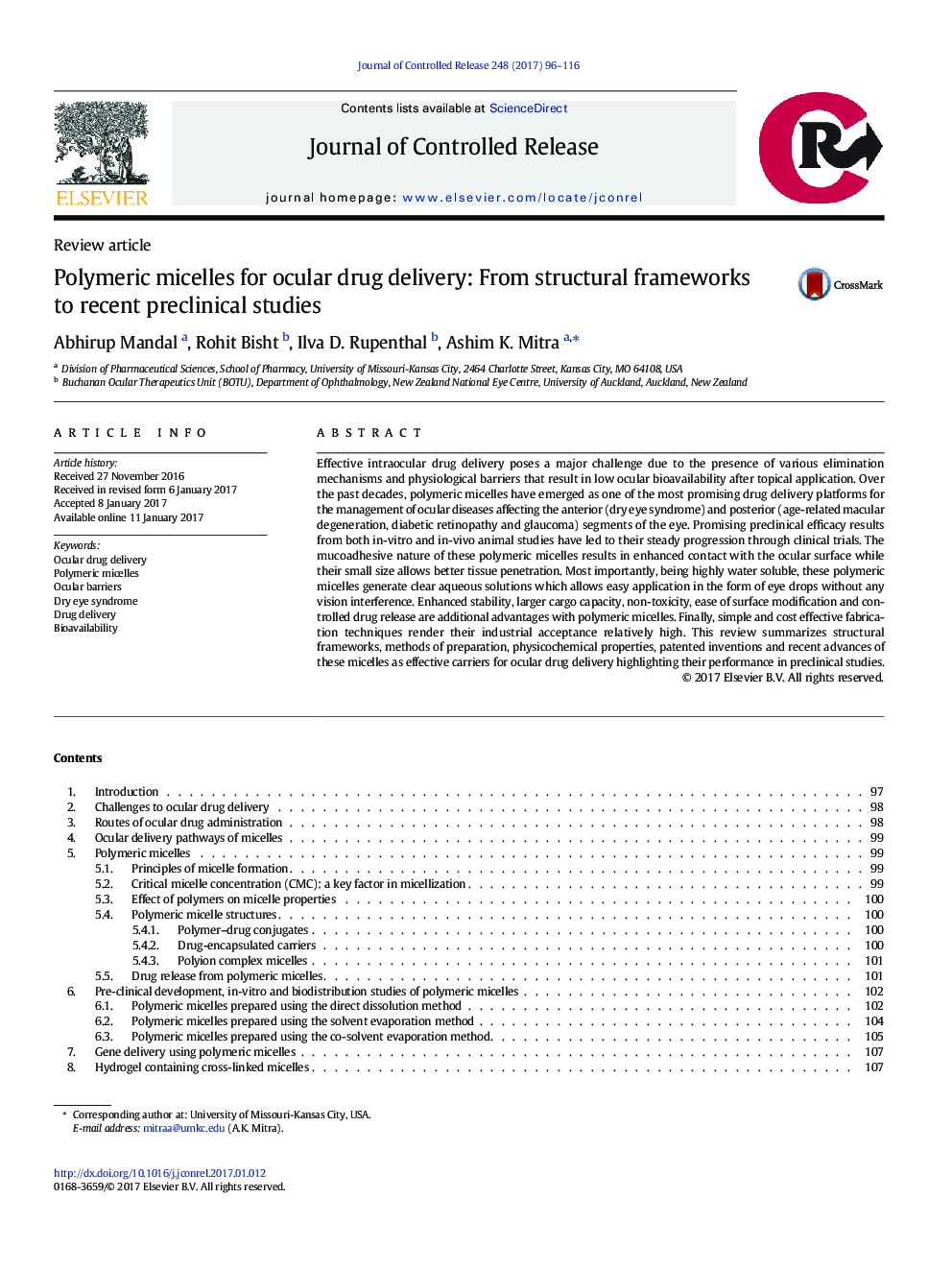| Article ID | Journal | Published Year | Pages | File Type |
|---|---|---|---|---|
| 5433919 | Journal of Controlled Release | 2017 | 21 Pages |
Effective intraocular drug delivery poses a major challenge due to the presence of various elimination mechanisms and physiological barriers that result in low ocular bioavailability after topical application. Over the past decades, polymeric micelles have emerged as one of the most promising drug delivery platforms for the management of ocular diseases affecting the anterior (dry eye syndrome) and posterior (age-related macular degeneration, diabetic retinopathy and glaucoma) segments of the eye. Promising preclinical efficacy results from both in-vitro and in-vivo animal studies have led to their steady progression through clinical trials. The mucoadhesive nature of these polymeric micelles results in enhanced contact with the ocular surface while their small size allows better tissue penetration. Most importantly, being highly water soluble, these polymeric micelles generate clear aqueous solutions which allows easy application in the form of eye drops without any vision interference. Enhanced stability, larger cargo capacity, non-toxicity, ease of surface modification and controlled drug release are additional advantages with polymeric micelles. Finally, simple and cost effective fabrication techniques render their industrial acceptance relatively high. This review summarizes structural frameworks, methods of preparation, physicochemical properties, patented inventions and recent advances of these micelles as effective carriers for ocular drug delivery highlighting their performance in preclinical studies.
Graphical abstractDownload high-res image (195KB)Download full-size image
